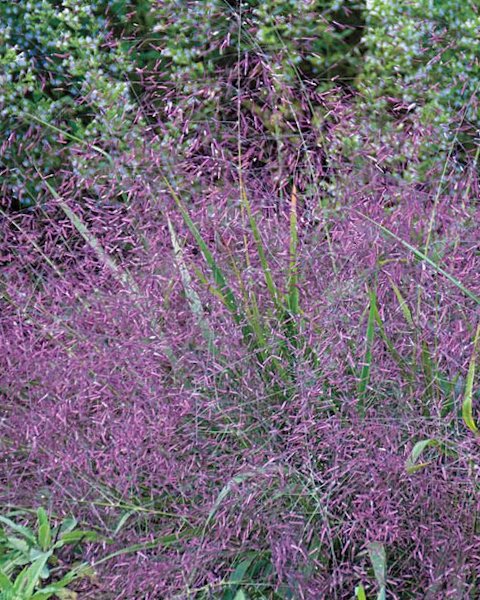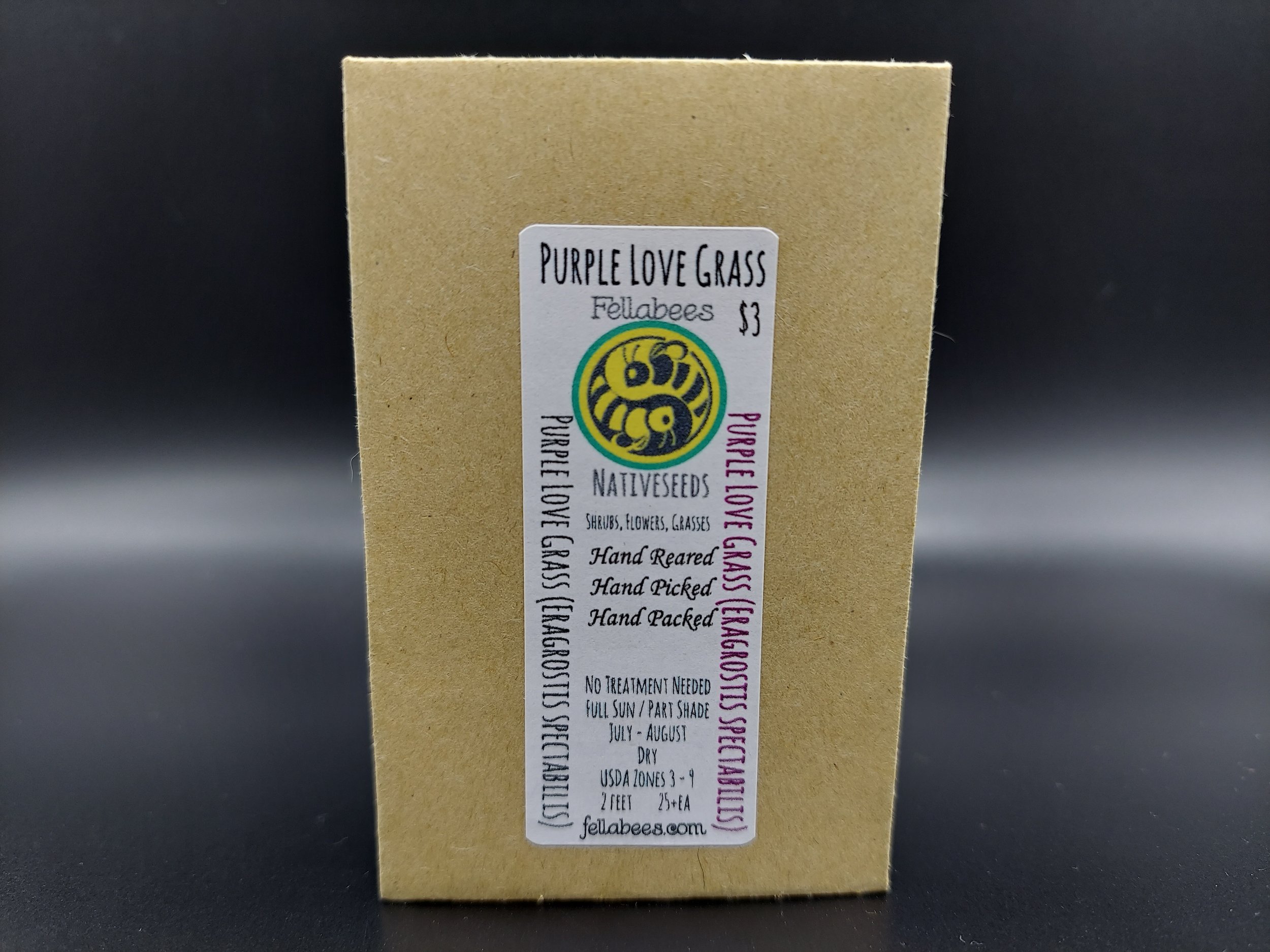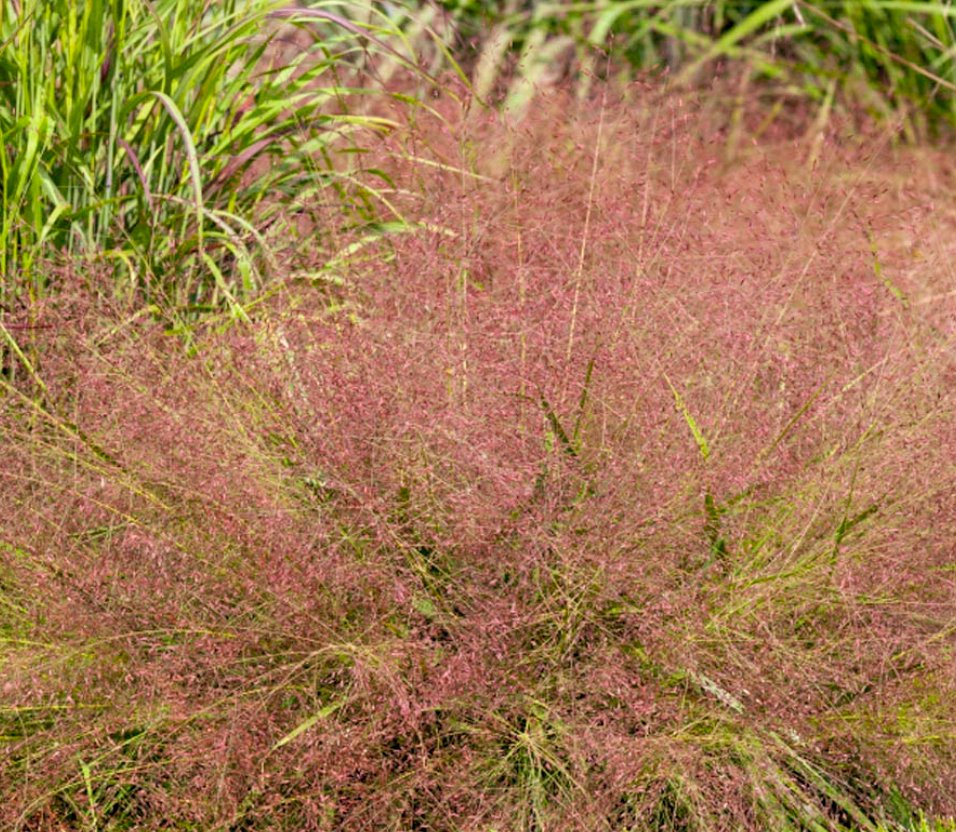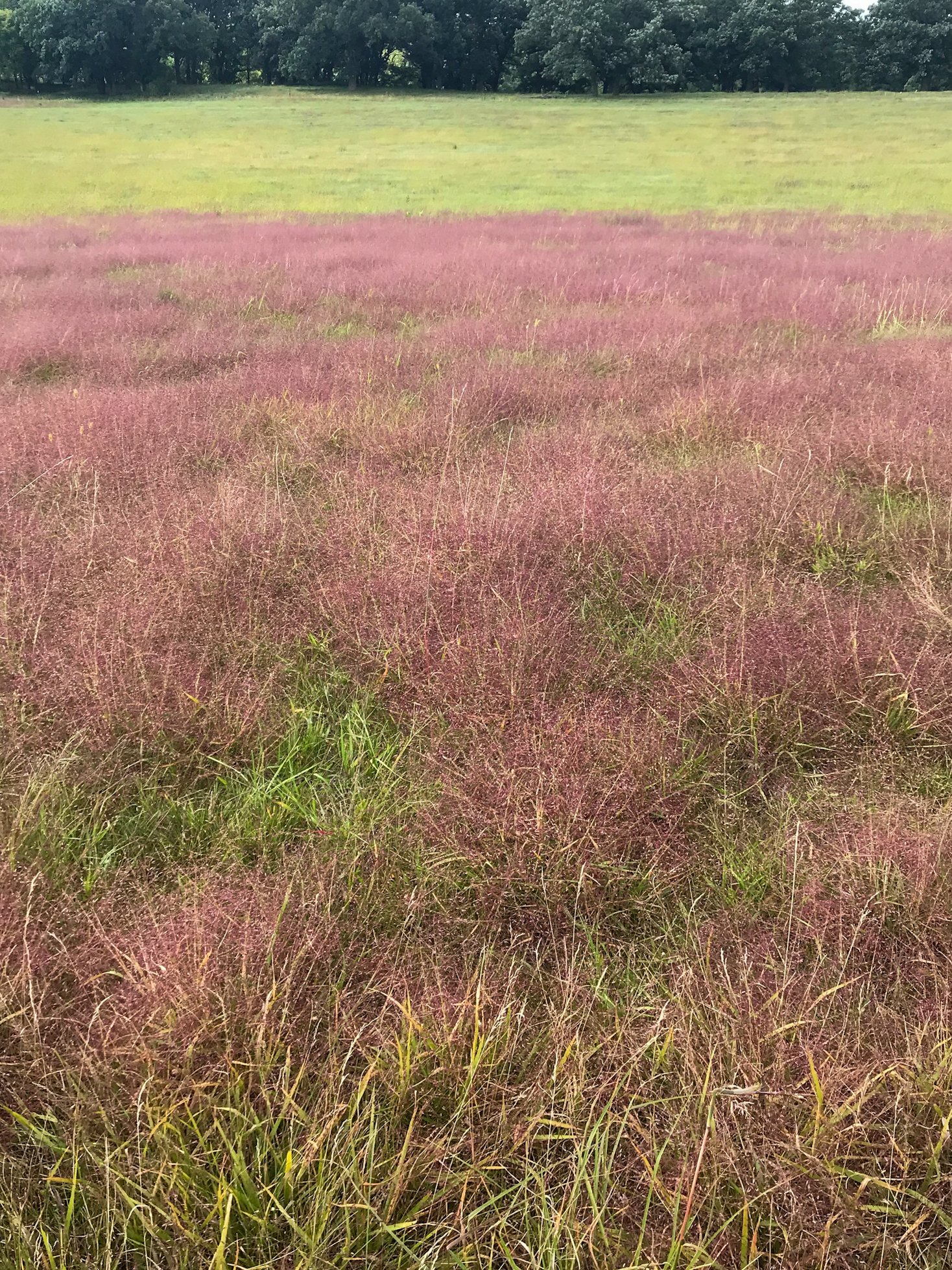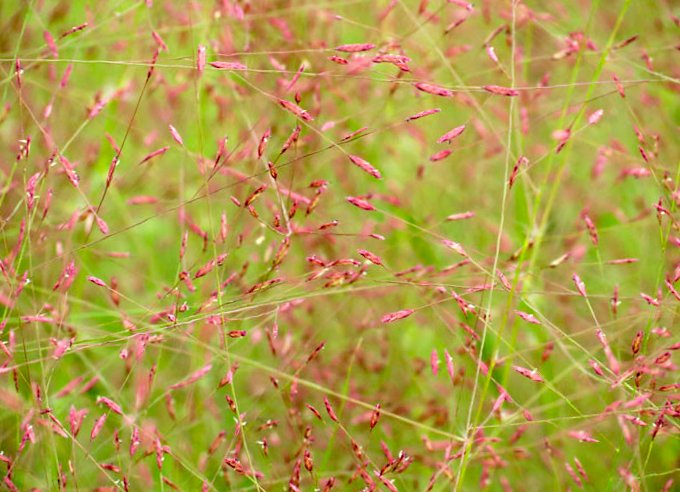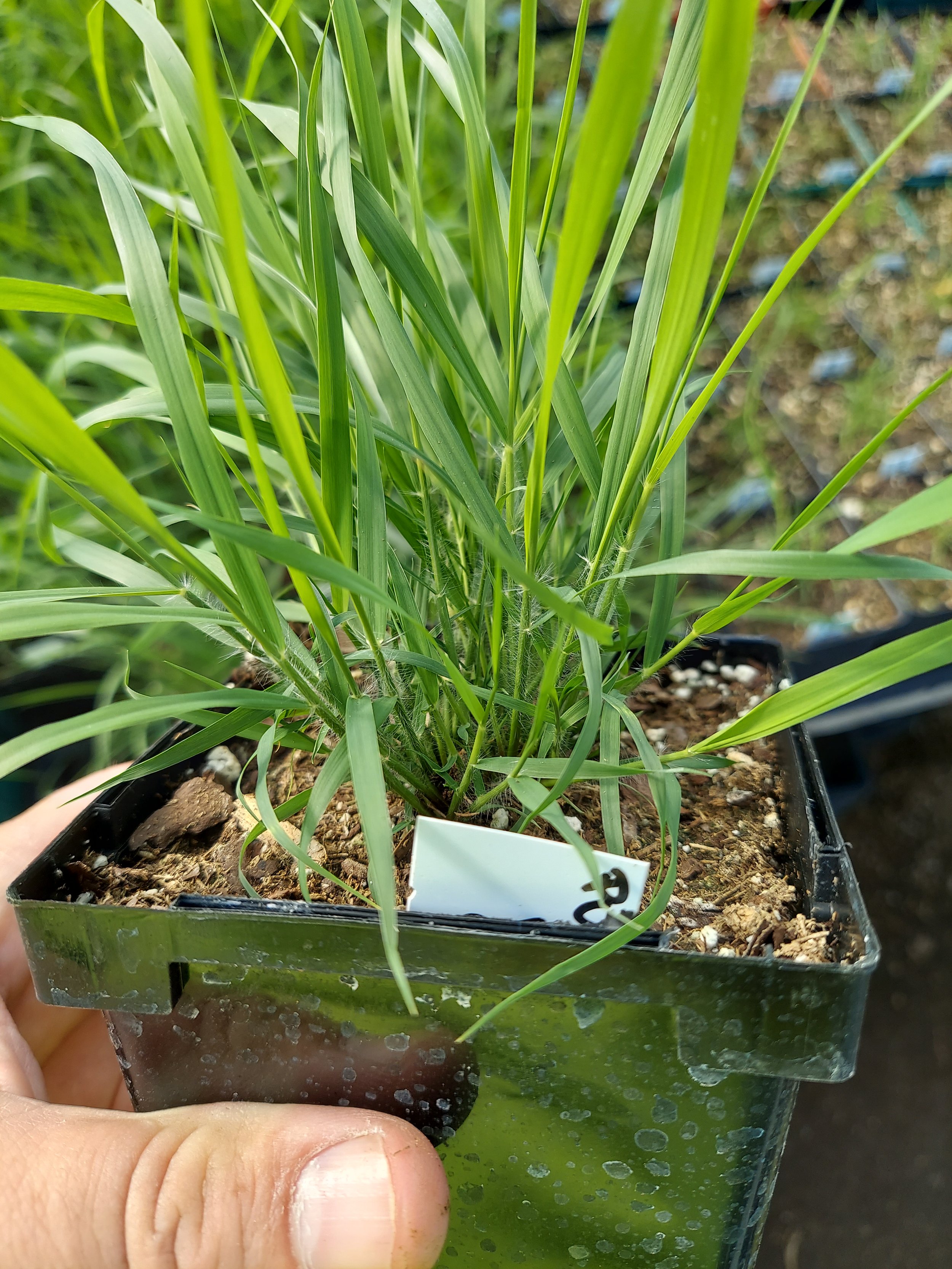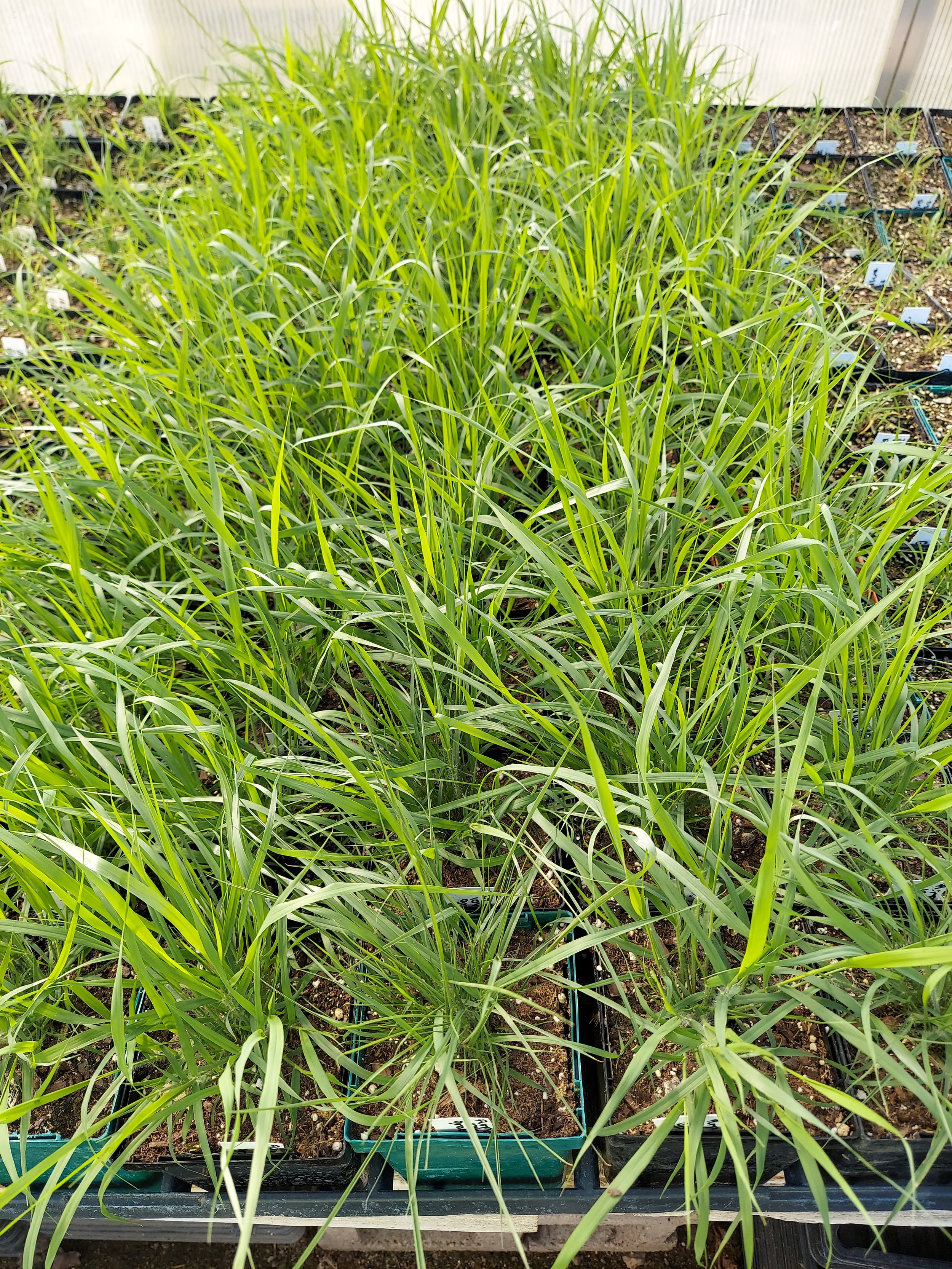Purple Love Grass (Eragrostis spectabilis)
Purple Love Grass (Eragrostis spectabilis)
Eragrostis spectabilis is the scientific name for the plant more commonly known as known as Purple Love Grass, is a species of flowering plant in the Poaceae family
Endemic from southern Canada all the way into northeastern Mexico.
Eragrostis spectabilis is an upright, tufted grass that grows from 1 to 2 feet tall. Its common name, Purple Love Grass, is derived from its inflorescence towards the top of the stem.
They bloom in late summer to early fall, turn purple, and contain the seeds. As the plant continues to mature, the inflorescence will often break off, and its movement will disperse the seeds. These seeds are reddish-brown and tend to be 0.6-0.8 mm long.
During the fall after seed dispersal, the plant's stem and branches turn soft brown or tan in color. The inflorescence of Eragrostis spectabilis exhibits a whorled branching structure, with three branches coming off the rachis at a time.
Eragrostis spectabilis is a perennial and goes dormant over the winter, and is classified as a C4 grass that prefers sandy soil and disturbed areas such as sandy or gravelly roadsides, plains, and woodlands.
Eragrostis spectabilis is also very drought-, salt- and cold-resistant, making it an excellent choice to introduce to roadsides, especially in colder areas with seasonal snowfall; once established, this plant needs little to no additional attention.
It prefers full sun, but will tolerate part shade and damp to wet soil. It spreads through rhizomes, as well as through seed dispersal both by birds and by the movement of the panicle by the wind; seeds use physiological dormancy and are ready to germinate after a dormancy period of about ten weeks, needing no special treatment or stratification in order to germinate.
Eragrostis spectabilis also attracts several species of birds and butterflies, as well as many native pollinators. The seeds are used as a food source for small mammals, such as mice and songbirds, and tend to be high in valuable nutrients.
It is also used as a grazing plant both for livestock and wild animals such as deer, and deer also will dig up the basal part of the stem to use as a food source during winter. The plant itself is also often used as both nesting material and cover for smaller animals.
Plant Details
USDA Zones: 3-9
Germination Needs: No special treatment needed, seeds are very small and like to feel soil but also see the sunlight, surface sowing is the best option. If starting in trays, bottom water, if outdoor keep evenly moist but not soaking.
Life Cycle: Perennial
Sun Exposure: Full to Partial
Soil Moisture: Dry
Plant Spacing: 1-2 feet
Height: 2 feet
Bloom time: July, August
Bloom Color: Green / Purple
Advantages :
Bird Favorite: seeds, insects, fruit, nectar, nesting, perchs.
Deer Resistant: Yes
Excellent in the home landscape!
Native to: Wisconsin, Minnesota, Michigan, Iowa, Illinois, Indiana, Ohio, Pennsylvania, New York, Vermont, New Hampshire, Maine, Massachusetts, Rhode Island, Connecticut, Delaware, Maryland, New Jersey, West Virginia, Virginia, Kentucky, Missouri, North Dakota, South Dakota, Wyoming, Nebraska, Colorado, Kansas, Arizona, New Mexico, Texas, Oklahoma, Arkansas, North Carolina, South Carolina, Louisiana, Mississippi, Tennessee, Alabama, Georgia, and Florida
.
.
Packet quantities:
We pride ourselves on ethical, hands on, ecological management, using no mechanical or chemical methods whatsoever.
All of our native seed is hand reared, hand picked, and hand packed from native prairies under our exclusive management, never breaking chain of custody from the field until it is sent to you. Each packet is hand prepared for shipment by us, directly.
Small seed species will contain greater than 20-25 seed
Large seed species will contain greater than 10-15 seed
It is our mission to spread the wealth of native plant and pollinator ecological sustainability, and educate back yard gardeners as well as corporate and government entities in how to germinate, grow, and benefit from native synergies.
Thank you for your support, it is because of you, that we can grow together to do, what we do.🐛🦋🐝🐞🌾🌱🌼🧡
Purple Love Grass (Eragrostis spectabilis)
Eragrostis spectabilis is the scientific name for the plant more commonly known as known as Purple Love Grass, is a species of flowering plant in the Poaceae family
Endemic from southern Canada all the way into northeastern Mexico.
Eragrostis spectabilis is an upright, tufted grass that grows from 1 to 2 feet tall. Its common name, Purple Love Grass, is derived from its inflorescence towards the top of the stem.
They bloom in late summer to early fall, turn purple, and contain the seeds. As the plant continues to mature, the inflorescence will often break off, and its movement will disperse the seeds. These seeds are reddish-brown and tend to be 0.6-0.8 mm long.
During the fall after seed dispersal, the plant's stem and branches turn soft brown or tan in color. The inflorescence of Eragrostis spectabilis exhibits a whorled branching structure, with three branches coming off the rachis at a time.
Eragrostis spectabilis is a perennial and goes dormant over the winter, and is classified as a C4 grass that prefers sandy soil and disturbed areas such as sandy or gravelly roadsides, plains, and woodlands.
Eragrostis spectabilis is also very drought-, salt- and cold-resistant, making it an excellent choice to introduce to roadsides, especially in colder areas with seasonal snowfall; once established, this plant needs little to no additional attention.
It prefers full sun, but will tolerate part shade and damp to wet soil. It spreads through rhizomes, as well as through seed dispersal both by birds and by the movement of the panicle by the wind; seeds use physiological dormancy and are ready to germinate after a dormancy period of about ten weeks, needing no special treatment or stratification in order to germinate.
Eragrostis spectabilis also attracts several species of birds and butterflies, as well as many native pollinators. The seeds are used as a food source for small mammals, such as mice and songbirds, and tend to be high in valuable nutrients.
It is also used as a grazing plant both for livestock and wild animals such as deer, and deer also will dig up the basal part of the stem to use as a food source during winter. The plant itself is also often used as both nesting material and cover for smaller animals.
Plant Details
USDA Zones: 3-9
Germination Needs: No special treatment needed, seeds are very small and like to feel soil but also see the sunlight, surface sowing is the best option. If starting in trays, bottom water, if outdoor keep evenly moist but not soaking.
Life Cycle: Perennial
Sun Exposure: Full to Partial
Soil Moisture: Dry
Plant Spacing: 1-2 feet
Height: 2 feet
Bloom time: July, August
Bloom Color: Green / Purple
Advantages :
Bird Favorite: seeds, insects, fruit, nectar, nesting, perchs.
Deer Resistant: Yes
Excellent in the home landscape!
Native to: Wisconsin, Minnesota, Michigan, Iowa, Illinois, Indiana, Ohio, Pennsylvania, New York, Vermont, New Hampshire, Maine, Massachusetts, Rhode Island, Connecticut, Delaware, Maryland, New Jersey, West Virginia, Virginia, Kentucky, Missouri, North Dakota, South Dakota, Wyoming, Nebraska, Colorado, Kansas, Arizona, New Mexico, Texas, Oklahoma, Arkansas, North Carolina, South Carolina, Louisiana, Mississippi, Tennessee, Alabama, Georgia, and Florida
.
.
Packet quantities:
We pride ourselves on ethical, hands on, ecological management, using no mechanical or chemical methods whatsoever.
All of our native seed is hand reared, hand picked, and hand packed from native prairies under our exclusive management, never breaking chain of custody from the field until it is sent to you. Each packet is hand prepared for shipment by us, directly.
Small seed species will contain greater than 20-25 seed
Large seed species will contain greater than 10-15 seed
It is our mission to spread the wealth of native plant and pollinator ecological sustainability, and educate back yard gardeners as well as corporate and government entities in how to germinate, grow, and benefit from native synergies.
Thank you for your support, it is because of you, that we can grow together to do, what we do.🐛🦋🐝🐞🌾🌱🌼🧡
Purple Love Grass (Eragrostis spectabilis)
Eragrostis spectabilis is the scientific name for the plant more commonly known as known as Purple Love Grass, is a species of flowering plant in the Poaceae family
Endemic from southern Canada all the way into northeastern Mexico.
Eragrostis spectabilis is an upright, tufted grass that grows from 1 to 2 feet tall. Its common name, Purple Love Grass, is derived from its inflorescence towards the top of the stem.
They bloom in late summer to early fall, turn purple, and contain the seeds. As the plant continues to mature, the inflorescence will often break off, and its movement will disperse the seeds. These seeds are reddish-brown and tend to be 0.6-0.8 mm long.
During the fall after seed dispersal, the plant's stem and branches turn soft brown or tan in color. The inflorescence of Eragrostis spectabilis exhibits a whorled branching structure, with three branches coming off the rachis at a time.
Eragrostis spectabilis is a perennial and goes dormant over the winter, and is classified as a C4 grass that prefers sandy soil and disturbed areas such as sandy or gravelly roadsides, plains, and woodlands.
Eragrostis spectabilis is also very drought-, salt- and cold-resistant, making it an excellent choice to introduce to roadsides, especially in colder areas with seasonal snowfall; once established, this plant needs little to no additional attention.
It prefers full sun, but will tolerate part shade and damp to wet soil. It spreads through rhizomes, as well as through seed dispersal both by birds and by the movement of the panicle by the wind; seeds use physiological dormancy and are ready to germinate after a dormancy period of about ten weeks, needing no special treatment or stratification in order to germinate.
Eragrostis spectabilis also attracts several species of birds and butterflies, as well as many native pollinators. The seeds are used as a food source for small mammals, such as mice and songbirds, and tend to be high in valuable nutrients.
It is also used as a grazing plant both for livestock and wild animals such as deer, and deer also will dig up the basal part of the stem to use as a food source during winter. The plant itself is also often used as both nesting material and cover for smaller animals.
Plant Details
USDA Zones: 3-9
Germination Needs: No special treatment needed, seeds are very small and like to feel soil but also see the sunlight, surface sowing is the best option. If starting in trays, bottom water, if outdoor keep evenly moist but not soaking.
Life Cycle: Perennial
Sun Exposure: Full to Partial
Soil Moisture: Dry
Plant Spacing: 1-2 feet
Height: 2 feet
Bloom time: July, August
Bloom Color: Green / Purple
Advantages :
Bird Favorite: seeds, insects, fruit, nectar, nesting, perchs.
Deer Resistant: Yes
Excellent in the home landscape!
Native to: Wisconsin, Minnesota, Michigan, Iowa, Illinois, Indiana, Ohio, Pennsylvania, New York, Vermont, New Hampshire, Maine, Massachusetts, Rhode Island, Connecticut, Delaware, Maryland, New Jersey, West Virginia, Virginia, Kentucky, Missouri, North Dakota, South Dakota, Wyoming, Nebraska, Colorado, Kansas, Arizona, New Mexico, Texas, Oklahoma, Arkansas, North Carolina, South Carolina, Louisiana, Mississippi, Tennessee, Alabama, Georgia, and Florida
.
.
Packet quantities:
We pride ourselves on ethical, hands on, ecological management, using no mechanical or chemical methods whatsoever.
All of our native seed is hand reared, hand picked, and hand packed from native prairies under our exclusive management, never breaking chain of custody from the field until it is sent to you. Each packet is hand prepared for shipment by us, directly.
Small seed species will contain greater than 20-25 seed
Large seed species will contain greater than 10-15 seed
It is our mission to spread the wealth of native plant and pollinator ecological sustainability, and educate back yard gardeners as well as corporate and government entities in how to germinate, grow, and benefit from native synergies.
Thank you for your support, it is because of you, that we can grow together to do, what we do.🐛🦋🐝🐞🌾🌱🌼🧡

